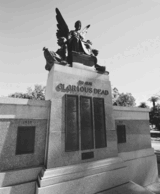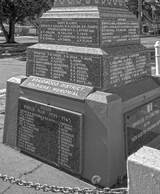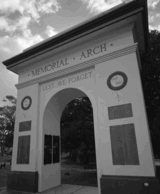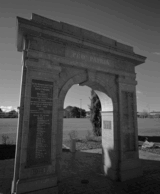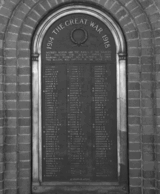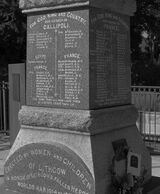Sacrifice
The United Kingdom declared war on Germany in early August 1914, during World War I, which is often referred to as “The War to End All Wars.”
The nations that made up the British Empire, now known as the Commonwealth, displayed great enthusiasm. Australia pledged to send a contingent of about 20,000 personnel and later established the Australian Imperial Force (AIF) to participate in the conflict.
Thousands of men of different ages volunteered to enlist in the military to answer the call of duty and defend Australia and the British Empire. This initiative led to over 52,000 Australians joining the newly formed Australian Imperial Force.
In New South Wales, local towns and communities from surrounding areas united to organise several impactful marches.
A noteworthy instance is the 'Gilgandra Snowball' movement, which originated in central-western New South Wales and advanced towards Sydney, spanning approximately 430 kilometres, prior to evolving into the Coo-ee March.
There were also nine other marches, such as the Kangaroos and Wallabies, which fostered a strong sense of unity and determination.
The total number of men who volunteered to enlist in the AIF from these marches exceeded one thousand. However, the marches garnered extensive publicity, thereby enhancing fundraising initiatives and facilitating larger-scale recruitment.
All these volunteer AIF soldiers came from diverse backgrounds across Australia. They showed remarkable courage as they travelled thousands of miles to Europe, a foreign land with a mostly unfamiliar culture.
For many, this journey symbolised travel and adventure. Unknowingly, for countless individuals, it became their final glimpse of loved ones and homeland as they made the ultimate sacrifice for freedom, never to see either again.
Across New South Wales and throughout Australia, monuments peacefully stand in both small and large towns to help local communities understand and cope with the tragedy of war.
Furthermore, these monuments honour those who served and the fallen, with their names etched in stone for eternity, paying tribute to their sacrifice.
“Lest we forget”
The nations that made up the British Empire, now known as the Commonwealth, displayed great enthusiasm. Australia pledged to send a contingent of about 20,000 personnel and later established the Australian Imperial Force (AIF) to participate in the conflict.
Thousands of men of different ages volunteered to enlist in the military to answer the call of duty and defend Australia and the British Empire. This initiative led to over 52,000 Australians joining the newly formed Australian Imperial Force.
In New South Wales, local towns and communities from surrounding areas united to organise several impactful marches.
A noteworthy instance is the 'Gilgandra Snowball' movement, which originated in central-western New South Wales and advanced towards Sydney, spanning approximately 430 kilometres, prior to evolving into the Coo-ee March.
There were also nine other marches, such as the Kangaroos and Wallabies, which fostered a strong sense of unity and determination.
The total number of men who volunteered to enlist in the AIF from these marches exceeded one thousand. However, the marches garnered extensive publicity, thereby enhancing fundraising initiatives and facilitating larger-scale recruitment.
All these volunteer AIF soldiers came from diverse backgrounds across Australia. They showed remarkable courage as they travelled thousands of miles to Europe, a foreign land with a mostly unfamiliar culture.
For many, this journey symbolised travel and adventure. Unknowingly, for countless individuals, it became their final glimpse of loved ones and homeland as they made the ultimate sacrifice for freedom, never to see either again.
Across New South Wales and throughout Australia, monuments peacefully stand in both small and large towns to help local communities understand and cope with the tragedy of war.
Furthermore, these monuments honour those who served and the fallen, with their names etched in stone for eternity, paying tribute to their sacrifice.
“Lest we forget”
